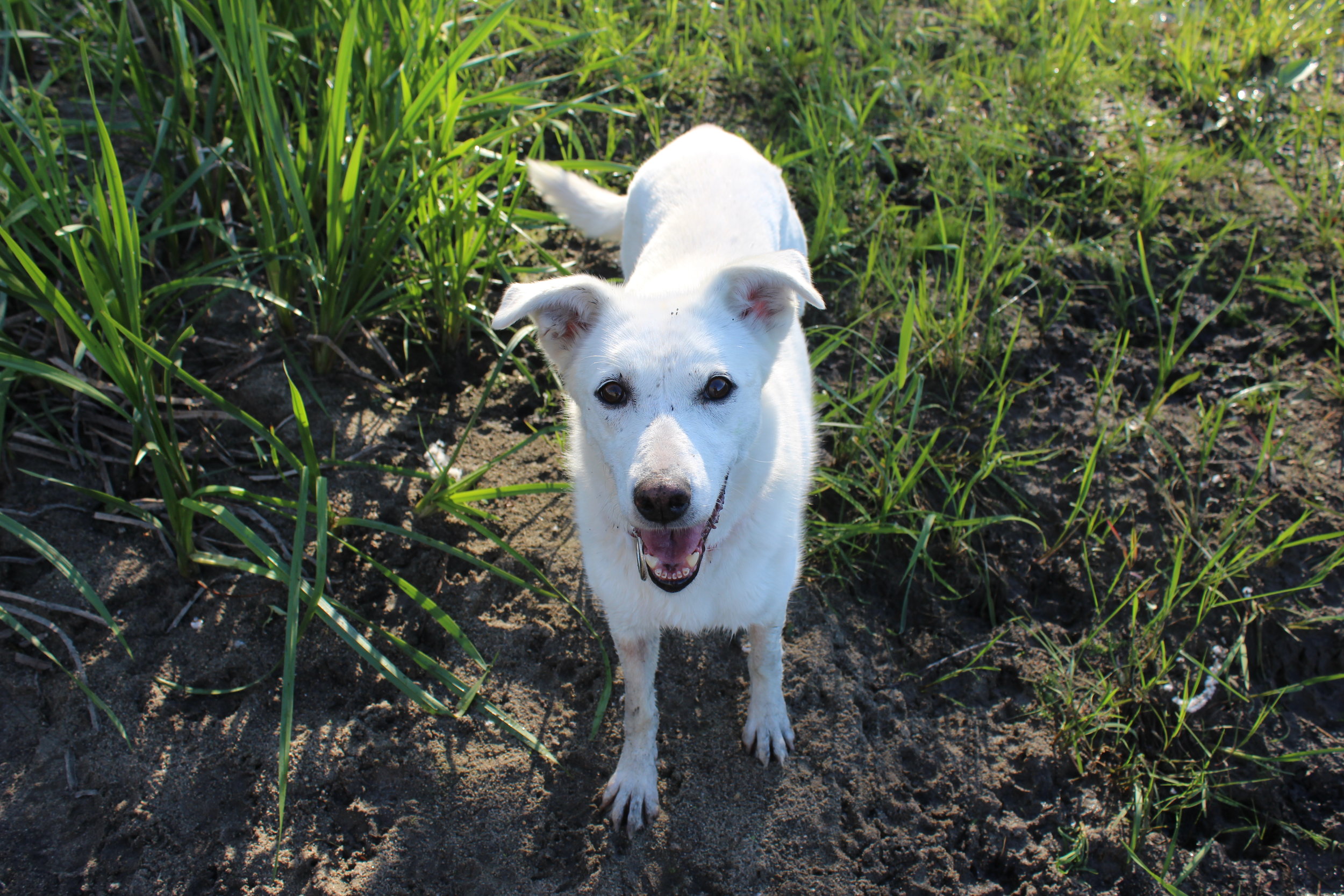Just Walk Beside Me and Be My Friend
You know that person? They’re the Friend Of A Friend, and they just don’t seem to have anything nice to say. When you post a picture of something you made, the F.O.A.F. will find the one crooked stitch. If you proclaim To Boldly Go with a slightly embarrassing picture, they’ll ‘helpfully’ note that Sister Spittlewhistle said to not split infinitives ;). That paint job you just finished? Well, the F.O.A.F. asks innocently if you knew to roll the paint into “W” shapes for even coverage? Oh, how different they are from the more pleasant types, who support your decorating efforts with a thumbs up and a “can’t wait to see it!”, click like on your goofy pictures, and stay gently and genteelly (if noticeably) mum when they disapprove.
Let’s face it: those negative comments really feel punishing, don’t they? And no one likes to be punished. Here’s something we don’t always think about, though: this “no one” includes dogs.
Modern dog trainers make liberal use of treats, games, and other things dogs like. We use these things to reinforce dog behaviours we want to see more of, like sitting when greeting guests, performing some acrobatic trick, or coming to us when we call “come!”
We don’t just limit our reinforcement to obedience behaviours, though. For example, I keep an eye on my dogs (constantly, if a bit lackadaisically). If they happen to do something I like, such as laying quietly on a dog bed, waiting at the door instead of barging, not chasing the cat, looking cute, you name it...I will reinforce it. I use food, ear scratches, door-opening services; whatever I have that they want. Net effect? I live in a small farmhouse filled with large, active, and scrappy dogs, and it’s surprisingly smooth sailing.
In the past, dog trainers used a lot more punishment. We used painful collars, jerking on leashes, and yelling or a stern word. These techniques did work: they stopped dogs from doing what we didn’t like, by hurting or frightening them. And it wasn’t just in the obedience ring, either. Dogs were regularly punished in this way at home, for a multitude of what we now see as standard-issue canine behaviours. This is the very same technique used by the dreaded F.O.A.F., if you think about it. The F.O.A.F. is always on the lookout for what they feel is wrong, and they’re ready to punish it as soon as humanly possible.
The science of animal learning has given us the means to change our dog’s behaviour to a simply astonishing degree using only the things that dogs like (think of tigers in the zoo, placing a paw on a table to have their nails trimmed for a food reward. Or the dog who used to bite men out of fear, now happily greeting guests. If they can do it, so can your dog!). This modernization of dog training has two wonderful side-effects:
- Our dogs avoid the well-documented aggressive and fearful fallout of using training techniques that are painful or scary. This protects our human families, too.
- Our dogs instead get a positive feeling about training, and guests, and their dog beds, and waiting at the door, and coming when called, and…
If you aren’t familiar with the new direction that dog training has taken in recent decades, please pack Fido into the Fiat and roll on over to the closest positive dog training classes you can find. It’s simply never too late to retire the F.O.A.F. approach. Leash up your dog and walk beside them down a whole new path.
Title from a quotation with uncertain origins, "Don’t walk behind me; I may not lead. Don’t walk in front of me; I may not follow. Just walk beside me and be my friend."

